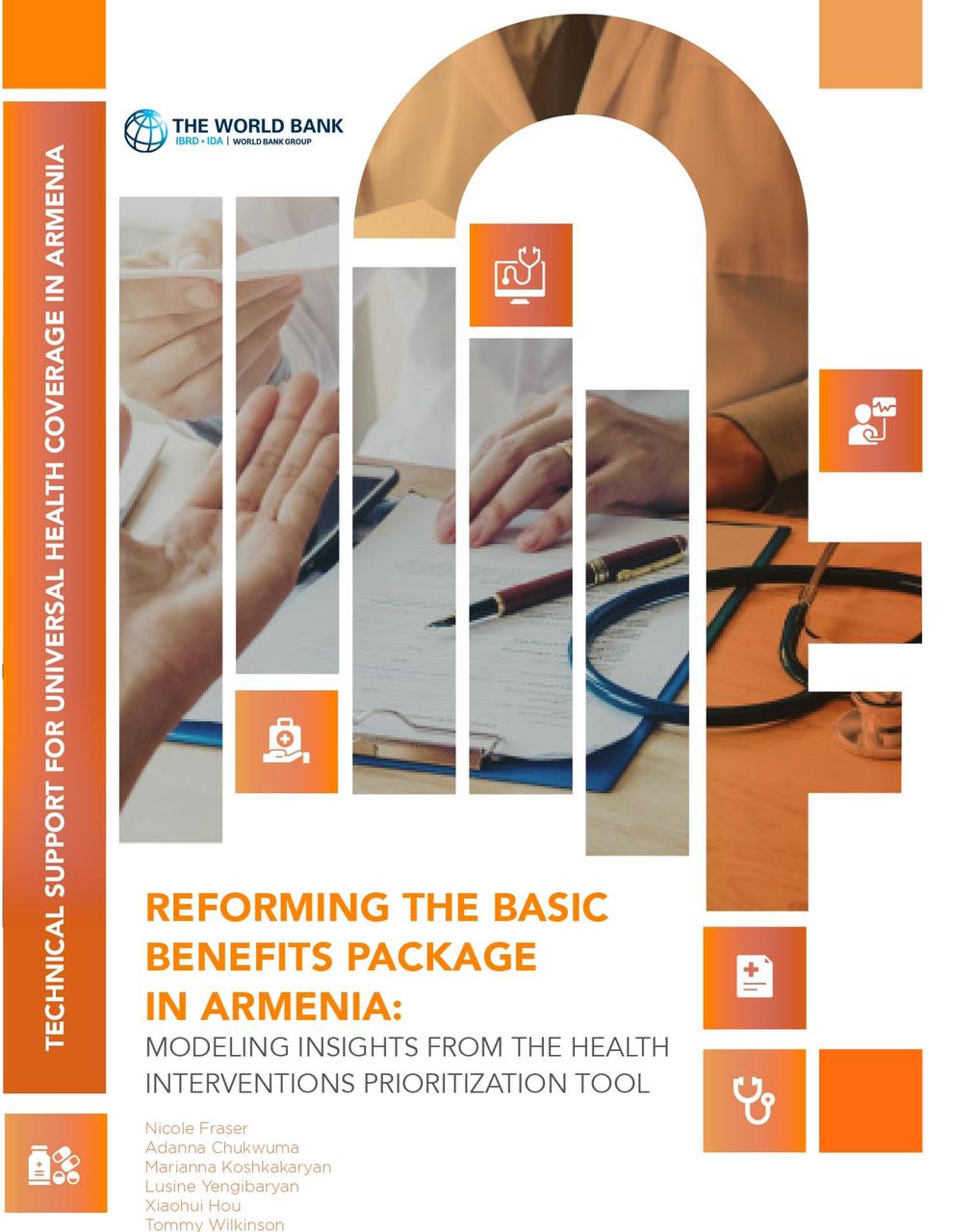The World Bank staff and external contributors have produced a report titled “Reforming the Basic Benefits Package in Armenia: Modeling Insights from the Health Interventions Prioritization Tool”. The full text of the report is available here, and on this page (see the attached file).
The report draws on using the Health Interventions Prioritization Tool (the HIPtool) – an open-source tool – to optimize allocations across essential health services in the basic benefits package (BBP) and is aimed at helping the national decision-makers to estimate the potential impact of these allocations on population health.
The analysis was financed by Gavi, The Vaccine Alliance, The Global Fund to Fight AIDS, Tuberculosis, and Malaria, and the Bill and Melinda Gates Foundation.
This allocative efficiency analysis is an illustration of how mathematical optimization can support decision making on Armenia’s future BBP, using the HIPtool, which enables users to model different scenarios based on the disease burden, cost-effectiveness, total budget envelope, and societal value for equity and financial protection. The tool maximizes DALYs averted, equity, or financial risk protection. The HIPtool can be useful for Ministries of Health seeking to make the economic and social case for funding increases or re-allocations, depending on policy objectives and the available budget.
According to authors (Nicole Fraser, Adanna Chukwuma, Marianna Koshkakaryan, Lusine Yengibaryan, Xiaohui Hou and Tommy Wilkinson), explicit analysis of value-for money in health care, as well as equity and financial risk protection will gain new urgency in the post-COVID-19 era. While the path to UHC will vary from country to country, national health benefit packages which are grounded in evidence will play a critical role in facilitating universal access to high-quality health care.
As one of the P4H global partners, the World Bank has also published a blog dedicated to this report at the P4H platform here.
The results of the analysis were disseminated in a national UHC event in February 2021 attended by stakeholders from the Ministries of Health, Finance, and Economy, State Health Agency, National Institute of Health, National Center for Disease Control, and National Institute of Labor and Social Research.
This was followed up with a workshop for key technical personnel in April 2021 on how to use the HIPtool software and parametrized Armenia model, embedded in wider reflections on what criteria and principles countries can use in benefits package design.


